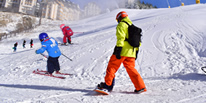History of the Alhambra - Origin, Arab Kings and Catholic Monarchs
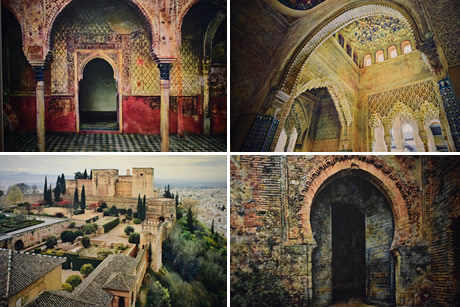
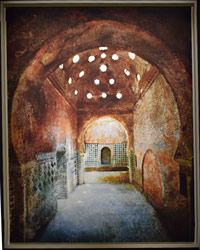
Enjoy a special day at the Alhambra with a guided tour
 Alhambra and Nasrid Palaces: discover the wonders of the Alhambra with this all-inclusive tour: the Nasrid Palaces, the Generalife, the Alcazaba, and more.
Alhambra and Nasrid Palaces: discover the wonders of the Alhambra with this all-inclusive tour: the Nasrid Palaces, the Generalife, the Alcazaba, and more.
 Alhambra + Albaicín + Sacromonte: a perfect combination of a guided tour of the Alhambra in the morning and a guided tour of the Albaicin and Sacromonte in the afternoon.
Alhambra + Albaicín + Sacromonte: a perfect combination of a guided tour of the Alhambra in the morning and a guided tour of the Albaicin and Sacromonte in the afternoon.It was called the 'AlHamra', meaning 'the Red', due to the color of the earth that was used in its construction.
The transformation into the grand monumental complex that graces Sabika hill today took place during the establishment of Nasrid dynasty in Granada.

Here, we present a list of the major historical events that took place in the history of Alhambra.
Who built the Alhambra?
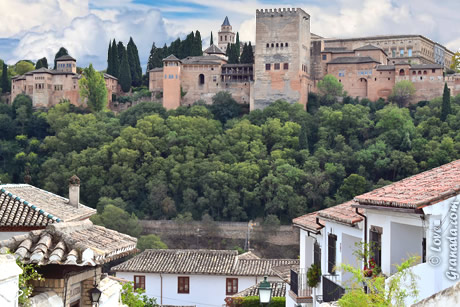 It was Muhammad I or Ibn al-Ahmar who relocated his court from
the Albaicin to the hill of the Sabika in 1237,
commencing the construction of the Alhambra,
which included buildings like Torre de la Vela, the Torre del Homenaje and the Acequia Real.
It was Muhammad I or Ibn al-Ahmar who relocated his court from
the Albaicin to the hill of the Sabika in 1237,
commencing the construction of the Alhambra,
which included buildings like Torre de la Vela, the Torre del Homenaje and the Acequia Real.
Muhammad II came to strengthen the dynasty and oversaw the construction of the Generalife Palace.
 During a period of relative peace with the Christian kingdoms, his grandson Muhammad III (1302-1308)
commissioned significant projects, including the Great Mosque of the Alhambra, the Royal Bath and the Palace of the Partal.
During a period of relative peace with the Christian kingdoms, his grandson Muhammad III (1302-1308)
commissioned significant projects, including the Great Mosque of the Alhambra, the Royal Bath and the Palace of the Partal.
However, he was later deposed and assassinated, marking the beginning of a series of internal struggles in the court of Granada.
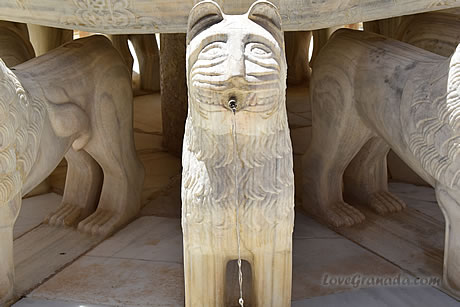 With the reign of Ismail I, there was a shift in the dynastic line.
With the reign of Ismail I, there was a shift in the dynastic line.
Under his rule, the Puerta de Armas was constructed, and he also built his own palace, the Palacio de Comares.
Yusuf I (1333-1354) undertook masterful works during what could be considered the golden age of the Alhambra, such as the Gate of Justice, the Throne Room in the Tower of Comares and the Oratory of the Partal.
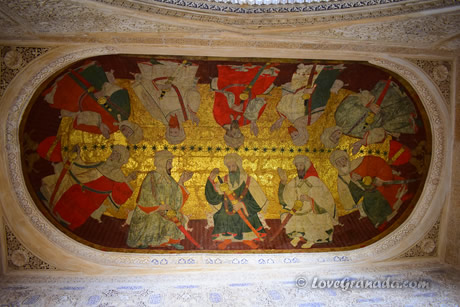 His son, Muhammad V (1354-1359), during a similarly prosperous reign, overseeing the
construction of the magnificent Palace of the Lions with its renowned courtyard, the Mirador de Lindaraja,
and completing the Palace of Comares.
His son, Muhammad V (1354-1359), during a similarly prosperous reign, overseeing the
construction of the magnificent Palace of the Lions with its renowned courtyard, the Mirador de Lindaraja,
and completing the Palace of Comares.
This effectively marked the conclusion of the Nasrid constructions in the Alhambra.
Make your experience in Granada even more complete and memorable
10 Best Caves and Venues for Flamenco in Granada: immerse yourself in the passion of flamenco and live unique experiences in the best tablaos in the city.
Authentic Arab Baths and Relaxing Massage: enjoy a deep relaxation experience with an exclusive massage in a traditional setting.
The Catholic Monarchs at the Alhambra
 On January 2, 1492 Boabdil relinquished control of the Alhambra and his kingdom to the
Catholic Monarchs,
an act that signaled the conclusion of eight centuries of Arab presence in the Iberian Peninsula.
On January 2, 1492 Boabdil relinquished control of the Alhambra and his kingdom to the
Catholic Monarchs,
an act that signaled the conclusion of eight centuries of Arab presence in the Iberian Peninsula.
From that moment, the adaptation of the Alhambra for the Christian kings began. They established their court here and chose this city as their eternal resting place.
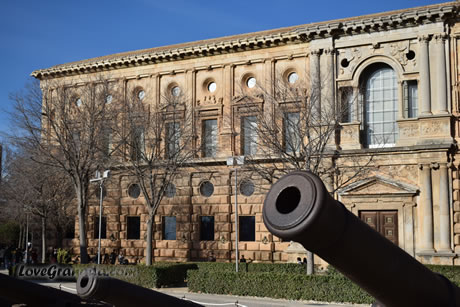 Decorative enhancements were executed throughout Nasrid palaces,
with the royal emblem prominently featured.
Decorative enhancements were executed throughout Nasrid palaces,
with the royal emblem prominently featured.
Oratories were transformed into chapels, and mosques into churches. The walls and towers were meticulously restored, and new entrances to the Alhambra were inaugurated.
During the reign of the Emperor Charles V, Catholic Monarchs's grandson, construction in the Alhambra persisted.
 Part of the Nasrid Palaces was dismantled to make way for the construction of the Emperor's Chambers and
the Palace of Charles V from 1533.
Part of the Nasrid Palaces was dismantled to make way for the construction of the Emperor's Chambers and
the Palace of Charles V from 1533.
Although the emperor held the Alhambra in high regard, he never relocated his court here. However, he did contemplate establishing the royal mausoleum for his family in Granada.
Period of Abandonment and French Invasion
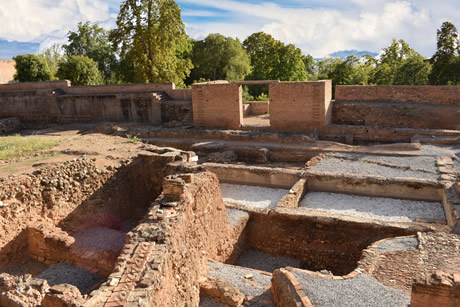 Regrettably, the Alhambra experienced a period of neglect beginning in the reign of Philip V
and was subsequently invaded by Napoleonic troops during the
French invasion of Spain.
Regrettably, the Alhambra experienced a period of neglect beginning in the reign of Philip V
and was subsequently invaded by Napoleonic troops during the
French invasion of Spain.
At this tragic juncture in Alhambra's history, a substantial portion of the monument teetered on the brink of destruction due to explosions set off by retreating French forces.
Years of complete abandonment followed, during which the Alhambra was occupied by people without homes, who even built bonfires inside to keep warm.
Romantic Travelers and International Diffusion
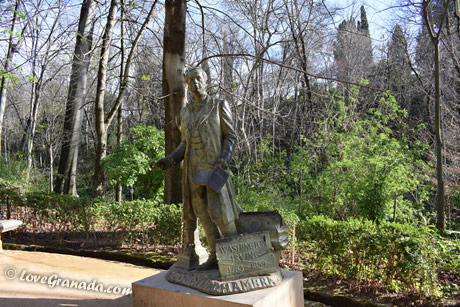 During the 19th century, romantic travelers arrived and were captivated by the
enduring magic and beauty of the Alhambra.
During the 19th century, romantic travelers arrived and were captivated by the
enduring magic and beauty of the Alhambra.
During this time, the American writer Washington Irving penned 'Tales of the Alhambra' while enjoying his stay in the Emperor's Rooms.
Additionally, notable French and English painters, along with European architects, visited the monument, capturing their impressions in their works.
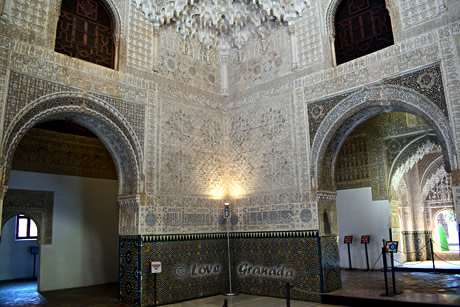 All of them played a significant role in the history of the Alhambra, implementing measures to halt the
deterioration and ensure the preservation of the monument.
All of them played a significant role in the history of the Alhambra, implementing measures to halt the
deterioration and ensure the preservation of the monument.
Period of Restoration and Conservation
It wasn't until the establishment of the First Republic in 1870 that the Alhambra was declared a National Monument.Following years of plundering and neglect, the restoration and conservation of this monumental complex commenced in the 19th century, a process that met with varying degrees of success.
 In 1914 the Patronato del la Alhambra was founded and in 1923 the great Leopoldo Torres Balbas
assumed responsibility for the restoration efforts.
In 1914 the Patronato del la Alhambra was founded and in 1923 the great Leopoldo Torres Balbas
assumed responsibility for the restoration efforts.
In 1984 the Alhambra and the Generalife were designated World Heritage Sites by UNESCO, acknowledging their exceptional cultural value.
Also see: History of Granada and History of the Alpujarra.
10 Significant Dates in the History of the Alhambra

1238 - The Origins of the Alhambra
Muhammad I, the founder of the Nasrid Dynasty, establishes the Alhambra as the royal palace and fortress. It begins its transformation into the magnificent complex we know today.

1273 - Construction of the Mexuar Hall
Under the rule of Muhammad II, the Mexuar Hall, one of the main rooms of the Alhambra, is completed. This room played a significant role in both administrative functions and royal ceremonies.

1333 - Construction of the Comares Palace
The Comares Palace, one of the most important parts of the Alhambra, is built by Yusuf I. It becomes the seat of royal power and includes the iconic Hall of Ambassadors.

1362 - Expansion Under Muhammad V
Muhammad V expands the Alhambra, adding new palaces and enhancing existing structures. The Alcazaba (the fortress area) is also further developed during his reign.

1377-1391 The Court of the Lions
Patio de los Leones was built during the reign of Muhammad V. The court was designed to reflect the beauty and grandeur of Islamic architecture, with its stunning fountain, and elegant marble columns.

1492 - The Fall of Granada and the Christian Conquest
In January 1492, King Ferdinand and Queen Isabella conquer Granada, marking the end of Muslim rule in Spain. This leads to the Alhambra's transformation under Christian rule.

1526 - The Renaissance Transformation
After the Christian conquest, the Alhambra undergoes significant Renaissance modifications. King Charles V orders the construction of the Palace of Charles V, a stark contrast to the Moorish architecture of the rest of the Alhambra.

1812 - Destruction During the Peninsular War
During the Napoleonic Wars, the Alhambra suffers significant damage. French troops use the site for military purposes, and parts of the building are destroyed, especially the towers and walls.

1870 - Restoration Efforts Begin
The Spanish government begins significant restoration work on the Alhambra, recognizing its cultural value. Architect Rafael Contreras leads early restoration efforts, which aim to preserve the site.

1984 - UNESCO World Heritage Site
The Alhambra is officially designated a UNESCO World Heritage Site, acknowledging its extraordinary historical, cultural, and architectural significance. This recognition brings greater attention to preserving and sharing the monument's beauty.
hear your thoughts.
© Copyright •
LoveGranada.com • Any use of the content, including copying of it in whole or in part is prohibited.
You Might Also Be Interested In
Page Updated: May 11, 2025
Opinions about History of the Alhambra
Full of life and history
Granada is a city full of life, history, and stunning architecture, making it one of Spain’s most captivating destinations. It played a key role during the Moorish period.
The city’s most famous landmark, the Alhambra, is a breathtaking palace with intricate Mudéjar-style architecture.
The surrounding forested areas feel like an oasis in the heart of the city, with thick greenery that provides a cool, shaded retreat from the urban heat.
Gem packed with history
This city is like stepping into a time machine, with Islamic, and Christian influences everywhere you turn. The Alhambra is an absolute gem packed with history, a stunning mix of Moorish architecture, a massive Carlos V palace built right in the middle and breathtaking gardens. The city was once a cultural and intellectual heart of Al-Andalus, and you can feel that history in every corner.
Breathtaking in beauty
I absolutely loved the Alhambra, it was breathtaking in beauty, when walking within its walls I could feel the history and felt very peaceful, as it was built by a peaceful man.
The gardens are beautiful, and I hope I may have the pleasure of going again soon (Yvonne).

